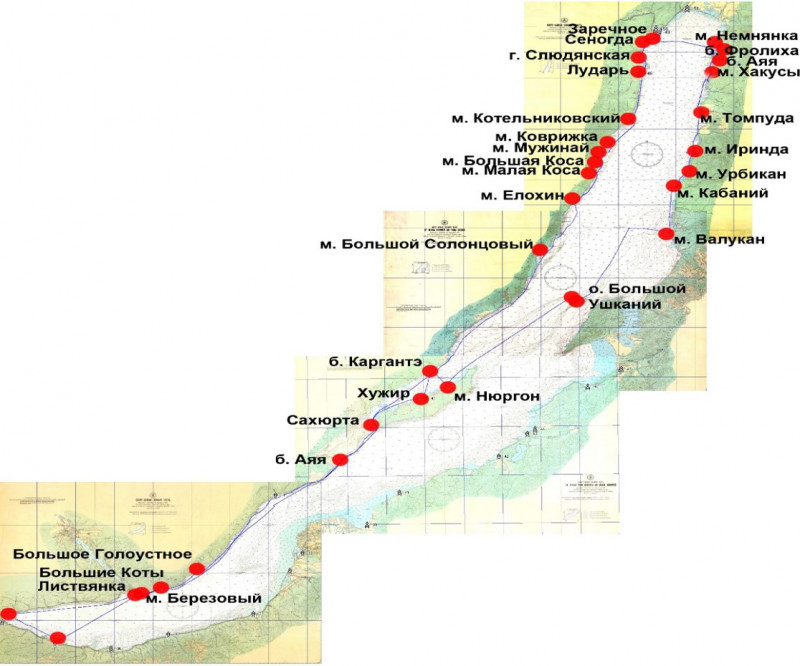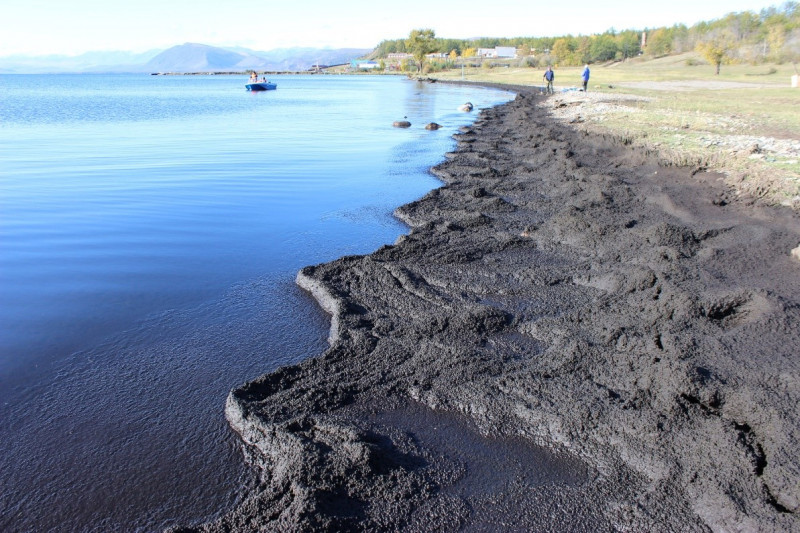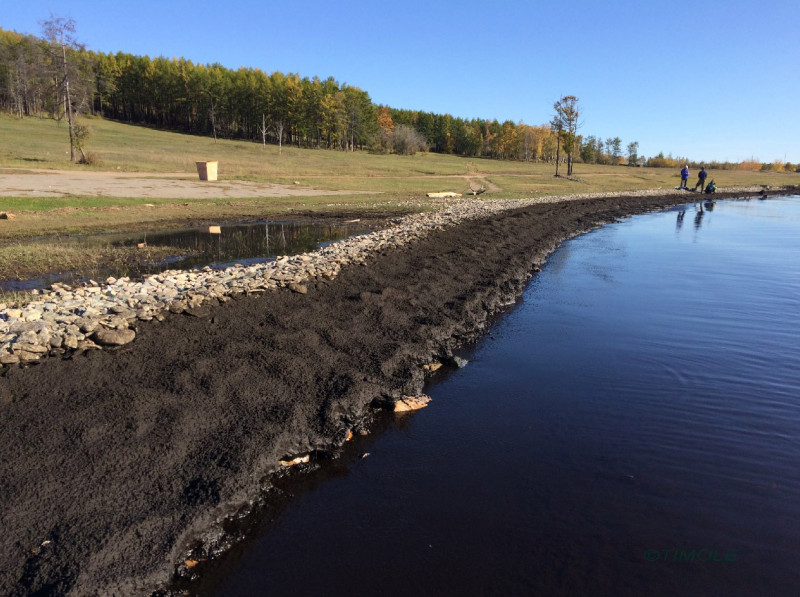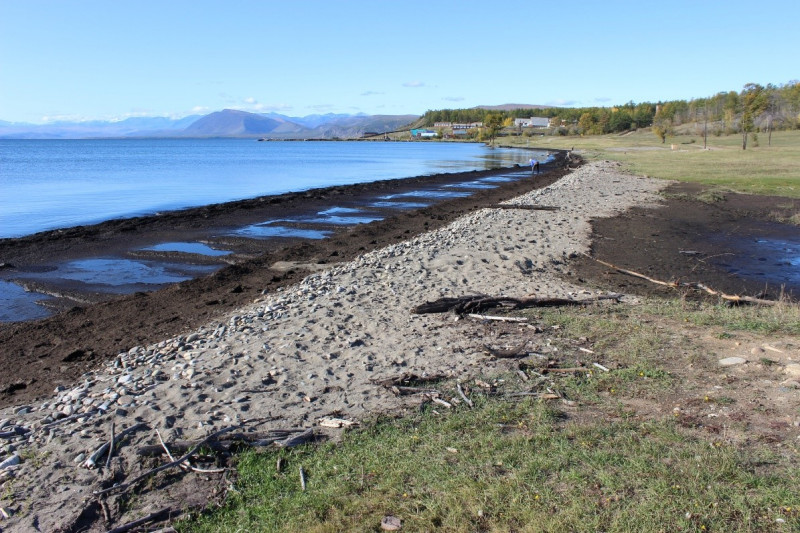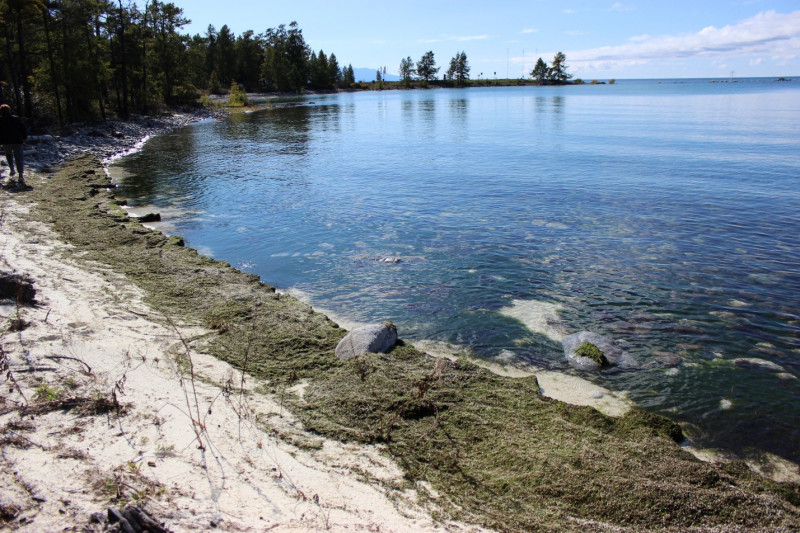Expedition onboard the RV “Akademik V.A. Koptyug”, September 15-30, 2020
The interdisciplinary expedition within the framework of the program “Large-Scale Changes in the Ecology and Biodiversity of Communities in the Coastal Zone of Lake Baikal: Interdisciplinary Research, Determination of Causes and Development Forecast” was carried out onboard the RV “Akademik V.A. Koptyug” from September 15 to 30, 2020. The expedition included 14 people, including specialists in hydrobiology, hydrochemistry and microbiology as well as the first-year master's student from Irkutsk State University.
The main aim of the expedition was a comprehensive interdisciplinary study of the ecological condition of the coastal zone of Lake Baikal in September 2020 using the example of the standard transects and long-term observation areas. Additionally, materials were sampled for other programs: “Microbial and Viral Communities in Biofilms of Freshwater Ecosystems: Taxonomic Diversity, Functioning Features and Biotechnological Potential”; “Assessment and Forecast of the Ecological Condition of Lake Baikal and Adjacent Territories under Conditions of Anthropogenic Impact and Climate Change”, and “Effect of Changing Natural and Anthropogenic Factors on Biogeochemical Processes in the Stony Littoral Zone of Lake Baikal”.
During fieldworks, 136 microbiological, 160 hydrochemical, 440 hydrobiological samples were taken, including 30 phytoplankton samples, 120 macrozoobenthos samples, 270 macrophytobenthos samples, 30 samples of coastal detritus accumulations, and 30 samples of sponges of the family Lubomorskiidae. Due to serious rearrangements of phytocommunities observed since 2013 in the coastal zone of Northern Baikal, in September 2020, the main attention was paid to this particular basin. Below, there are brief conclusions on the microbiological state of the waters, as well as on the life-time express analysis of the species composition and abundance of filaments that were once alien to Lake Baikal, whose mass development has been recording since 2010. Samples for other groups and sections of work will be analyzed for several months, and for zoobenthos – several years.
Hygiene and microbiological assessments of the coastal waters of Lake Baikal were carried out in the spring and summer of 2020. Overall, 136 samples of lacustrine and riverine waters were taken and analyzed. Sampling analysis and interpretation of results were carried out according to the GOST 31942-2012 standard, the MUK 4.2.1884-04 guidelines, and the SanPiN 2.1.5.980-00 rules and regulations for Category 2 surface water bodies. In all samples, the parameters of total coliforms and thermotolerant coliforms were determined, whose numbers should not exceed 500 CFU and 100 CFU in 100 ml, respectively. To obtain additional information about the sanitary state of waters, the number of enterococci was estimated. According to MUK 4.2.1884-04, detection of enterococci above the signal value (50 CFU/100 ml) suggests the fresh fecal contamination and a potential epidemic hazard.
The exceeded values of the standardized and recommended hygienic microbial indicators were detected in the water areas of the Listvyanka and Kultuk settlements. In the coastal waters of the Listvyanka settlement, the standard for thermotolerant coliforms was more than four times exceeded (452 CFU/100 ml); for enterococci – more than five times exceeded (262 CFU/100 ml). A high abundance of thermotolerant coliforms (156 CFU/100 ml) was detected in the littoral zone of the Kultuk settlement. The most favorable hygienic and microbiological condition was observed in the water area of the northern basin of the lake.
The data were obtained on the mass development of spirogyra and other algae alien for Lake Baikal. To assess the state based on this criterion, 32 sites were surveyed and 270 samples were taken in the depth range from the water edge to 6-7 m. Unfortunately, the results of the analyses are disappointing. Despite the extremely high water level in the lake, which usually smoothed such negative phenomena, in September 2020, the abundant blooms of filaments were recorded at most of the surveyed sites. The main conclusions are as follows: i) The east coast of the northern basin, from the Davsha site to the area south to Tompuda site (practically deserted shores without settlements), are the cleanest areas in the coastal zone; there were no filaments detected. Starting from the Tompuda site (forestry and dacha houses) and to the Aya, Frolikha, Zarechny, Senogda, Goremyki, Muzhinaiskaya Kovrizhka, and Elokhin Cape sites, massive thickets dominated by Spyrogyra morphotype No 1 were observed almost ubiquitously (with some exceptions). ii) In the autumn, the degradation of plant communities in the coastal zone was observed almost throughout the coast of the lake. It was especially manifested in the zones of distribution of the coastal settlements. iii) Abundant release of rotten filaments, as well as spirogyra of the 2020 generation, recorded in September 2020 opposite the Zarechnoye site (Northern Baikal) was perhaps the most massive in all years of the research. iv) Since 2016, we have been recording annual mass development of cyanoprokaryotes and their mass release in the coastal zone of Bolshoy Ushkaniy Island that was previously considered the standard of true Lake Baikal. The same occurred in September 2020. v) After a year hiatus (complete extinction in Bolshiye Koty Bay in 2018 resulted from the active environmental education of the population), in 2019 and 2020, spirogyra again became mass and dominant in the coastal zone of the bay. vi) No other improvements in the ecological condition of the coastal zone were recorded based on this criterion. On the contrary, based on some parameters, the degradation processes are progressing and worsening.




